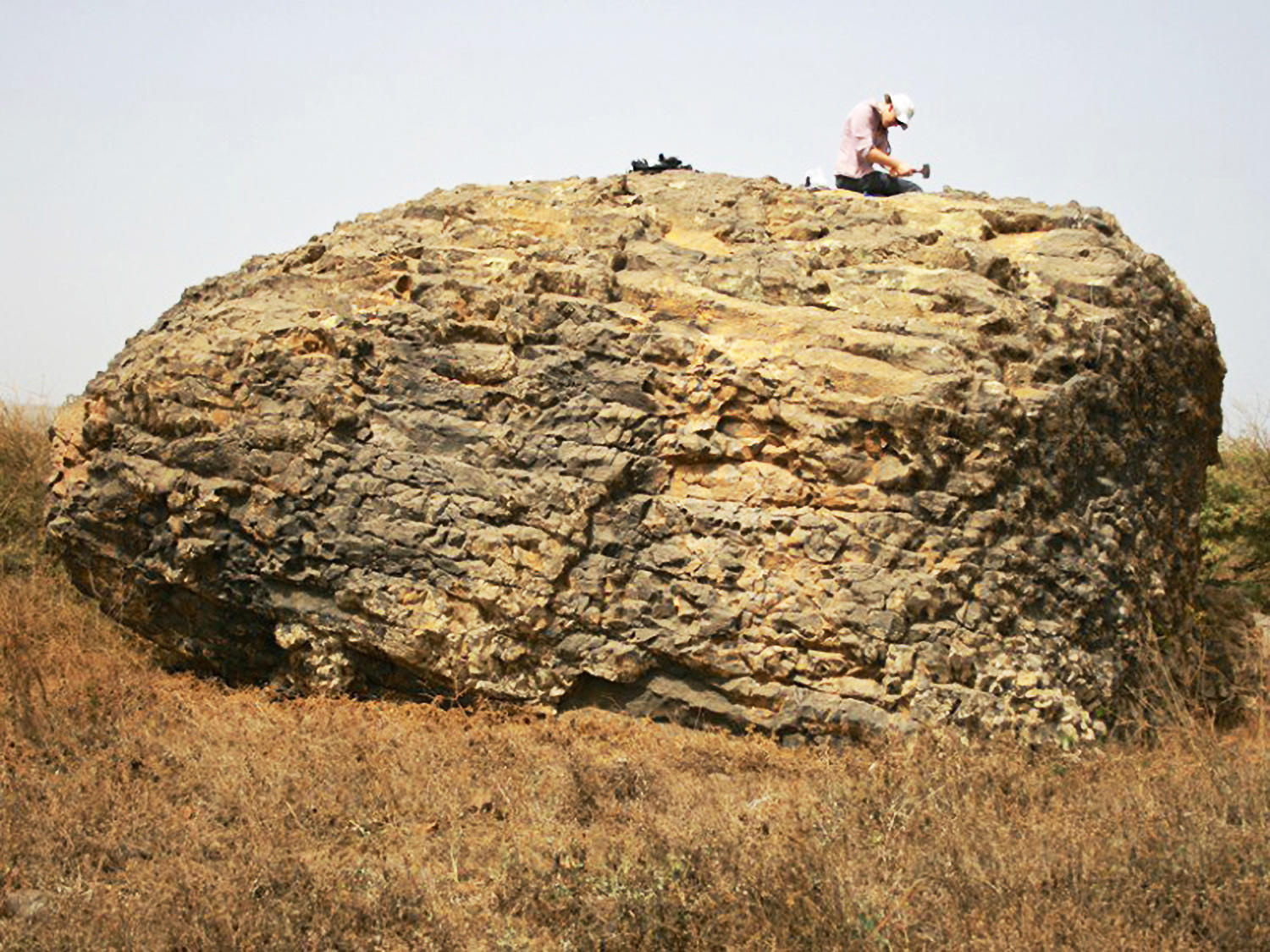Geologists working in the Cape Verde islands, off the coast of West Africa, have found evidence to back up a controversial theory about how huge boulders made of the same material as the surrounding ocean floor ended up atop a six-hundred-foot-high plateau. The scientists, led by Columbia adjunct professor Ricardo Ramalho, hypothesized a few years ago that the elephant-sized boulders, made of basalt and limestone, were lifted up off the ocean floor and launched hundreds of feet into the air by a tsunami that they believe occurred when an island volcano named Fogo, about thirty miles away, collapsed in on itself. Their theory was met with skepticism at the time. But this year Ramalho and Gisela Winckler, a Columbia geochemist, used an innovative radiometric dating technique to determine that the boulders were first exposed to the atmosphere 73,000 years ago — firmly within the established time window of Fogo’s collapse, between 65,000 and 124,000 years ago.
Ramalho and Winckler’s discovery, which appeared in the journal Science Advances, is expected to revive a simmering debate among geologists about the destructive potential of volcanic collapses. The consensus view is that after large volcanoes erupt and their emptied magma chambers no longer support their outer structure, they fall apart gradually and rather uneventfully, over the course of many years. Ramalho is among a relatively small number of geologists who believe that they may implode suddenly and violently, causing environmental destruction for hundreds of miles.
“There have been no direct observations of large-scale volcanic collapses, catastrophic or otherwise,” says Ramalho. “Only very small landslides from volcanic slopes have ever been observed. But our study provides solid evidence that collapses can happen in a catastrophic way.”



